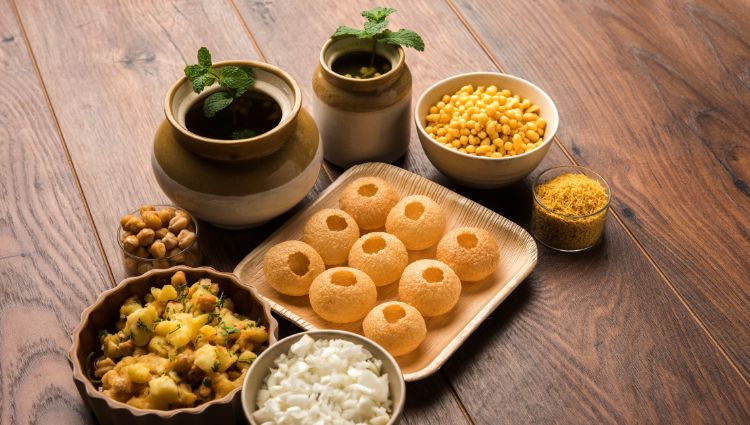Mystery of the Pani Puri, Who invented Golgappa?
Ah, the golgappa. That tiny, crispy sphere filled with savory goodness and exploding with flavor. It’s a street food icon, a beloved snack enjoyed by millions across India and beyond. But who invented golgappa? The answer, like the golgappa itself, is bursting with possibilities and shrouded in a bit of mystery.
Our journey to the golgappa’s origins takes us back to the ancient empire of Magadha, in present-day Bihar. Food historians believe that around 500 BCE, these playful puris were known as “fulki.” Imagine smaller, fried delights filled with mashed potatoes and lentils – a precursor to the modern golgappa.
Magadhan Cook accidentally dropped a fulki into a bowl of spiced water, giving birth to the first pani puri. This story speaks to the adaptability and resilience of Indian cuisine, where even mistakes can lead to delicious discoveries.
The epic Mahabharata also offers a captivating origin story for the golgappa. Draupadi, the wife of the Pandavas, is said to have used leftover dough and stuffing to create small, edible balls to feed her family during their exile. While the text doesn’t explicitly mention golgappa, the description of Draupadi’s resourcefulness and culinary ingenuity aligns perfectly with the dish’s characteristics.
Whether Draupadi truly invented the golgappa is open to debate. But her story adds a layer of cultural significance to this beloved snack, reminding us of the power of food to nourish not just the body, but also the spirit.
Food historians propose another interesting theory: the golgappa’s evolution from the Raj Kachori, a popular street food in North India. Imagine a larger, open-faced puri brimming with potatoes, chickpeas, and chutneys. Some believe that smaller, bite-sized versions of this delectable dish eventually transformed into the golgappas we know and love today.
This theory highlights the interconnectedness of Indian cuisine, where dishes inspire and evolve over time, creating a vibrant tapestry of flavors and textures.
The golgappa’s journey doesn’t end within the Indian subcontinent. It has crossed borders and adapted to local palates, acquiring different names and variations along the way. In Bengal, they’re called “phuchka” and often filled with a potato and chickpea mixture. South India embraces them as “pani puri,” served with a refreshing mint-flavored water.
This adaptability speaks to the golgappa’s inherent deliciousness and versatility. It can be enjoyed plain, spiced up with chutneys, or even filled with sweet treats – a testament to its ability to cater to diverse preferences.
Despite our exploration of historical and cultural narratives, the true inventor of the golgappa remains a mystery. But perhaps that’s part of its charm. This tiny treat, bursting with flavor and steeped in legend, embodies the spirit of culinary innovation and cultural exchange that defines Indian cuisine.
So, the next time you pop a golgappa in your mouth, savor its deliciousness and remember the rich tapestry of stories woven into every bite. You might not discover the definitive inventor, but you’ll certainly embark on a delightful journey through the history and culture of India, one flavorful mouthful at a time.

